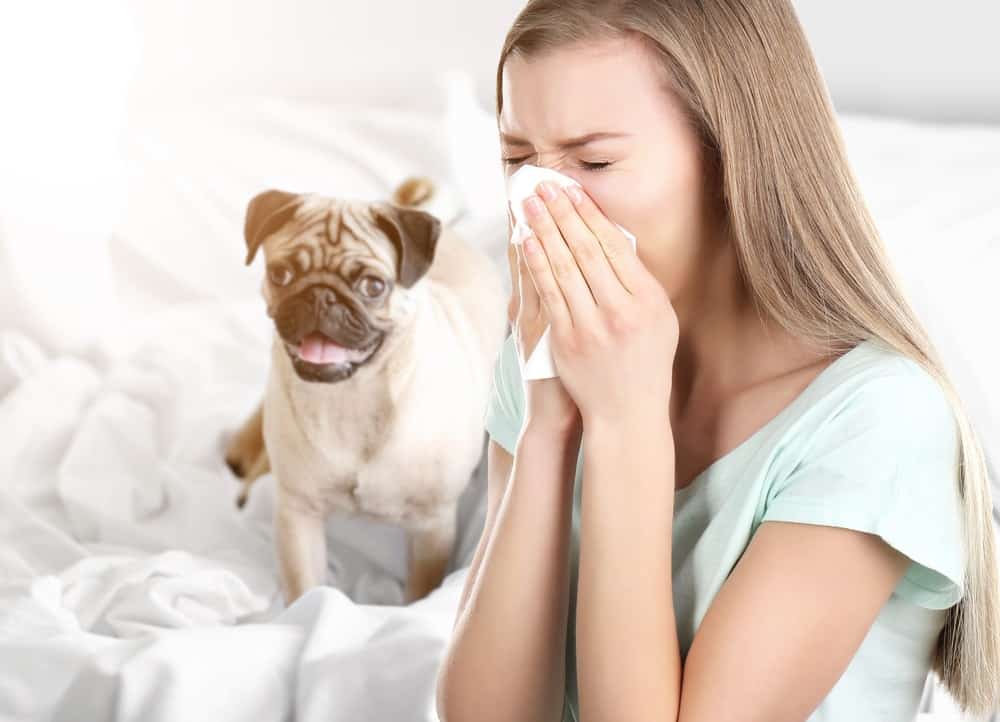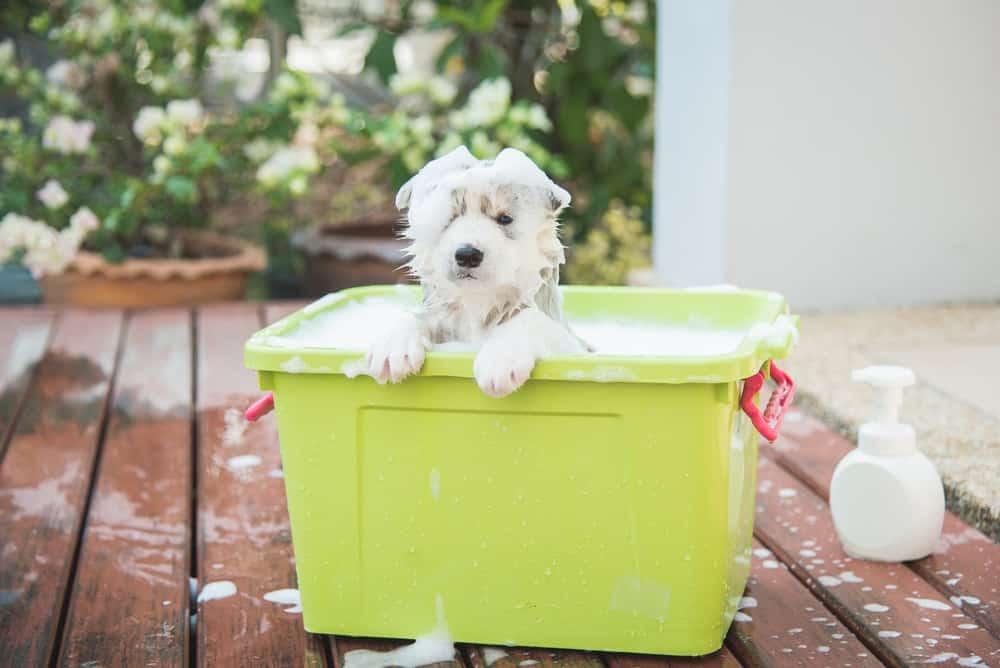“This post contains affiliate links, and I will be compensated if you make a purchase after clicking on my links.”
Is there hope for allergic dog lovers hoping to share their heart and home with a furry family member? For those of us that absolutely adore dogs, it’s impossible to resist petting, cuddling, and snuggling with any four-legged friends. But, dog lovers with allergies know, sometimes just being in the same room with a dog, no matter how much you love them, can lead to itchy, watery eyes, runny nose, rash and a whole host of other allergic reactions.

Researchers have discovered that approximately 25% of all dog owners show some level of allergies to their dogs, yet through good housekeeping methods, proper bathing and grooming of their dogs, and often with the help of immunotherapy, it’s not impossible to manage those allergies and live a happy, healthy, and harmonious life with a dog.
Are there hypoallergenic dog breeds?
Truth is, no dog is truly hypoallergenic. But, several breeds are known to produce less dander, and thus are less likely to cause an allergic reaction. Allergic dog lovers hoping to share their homes with dogs may consider spending time with one of these breeds.
Some examples of these “hypoallergenic” breeds include the Bedlington Terrier, Bichon Frise, Chinese Crested, Irish Water Spaniel, Kerry Blue Terrier, Maltese, Poodle, Portuguese Water Dog, Schnauzer, soft-coated Wheaten Terrier, and Xoloitzcuintli.
Unfortunately, some dog lovers are allergic, not just to dander, but to allergens in a dog’s saliva and urine as well.
While some breeds have shown to produce less allergens, others are known to produce significantly more allergy-inducing dander and are best avoided.
Some breeds most prone to leaving behind dander are Cocker Spaniels, Springer Spaniels, Basset Hounds, West Highland White Terriers, Dachshunds, Labrador and Golden Retrievers, and German Shepherds.

What steps can I take to avoid an allergic reaction to my dog?
While those with allergies would be wise to choose from those breeds listed as least allergenic, if you happen to fall in love with a dog that’s not on the list (and it’s very easy to do!), the following tips can help make living with a dog and with allergies more tolerable:
- Keep dogs out of the bedroom and off of upholstered furniture where you spend significant lengths of time. If you simply can’t bear to sleep with your dog in another room, cover beds and pillows with impermeable mattress covers and pillow cases and wash bedding regularly.
- Install allergen-reducing air conditioner filters and use air purifiers throughout the home, particularly in bedrooms and living areas.
- Move play sessions outdoors to lessen the amount of dander released into the air inside the home.
- Wash your hands frequently, especially after touching your dog. And, in general, avoid touching your face, eyes, mouth and nose.
- Plan to wash your dog more frequently, about once a week, to reduce dander and keep shedding hair to a minimum. Be sure to use a moisturizing dog shampoo to prevent over-drying your dog’s skin and coat.

- Brush your dog outdoors or employ a groomer to handle this task for you.
- Instead of carpet and rugs, use easy-to-clean flooring, like tile, laminate, or wood.
- Replace fabric drapes and curtains with wood or plastic blinds that can be dusted regularly.
- Consider sofa and chair covers, removable cushion covers, and machine-washable pet bedding to make eliminating shed hair, dust, and dander easier.
- Consider additional treatments for your own allergies, such as antihistamines, immunotherapy, allergy shots, or nose sprays. Talk to an allergist to determine exactly what you’re allergic to (Is it dander, saliva, or could it be pollen carried on your dog’s coat from outdoors?) and how to best support a healthy immune system to avoid dangerous allergic reactions.
Are you allergic to dogs? Do you live with one anyway? Have you found a breed that seems to least bother your allergies? Please, share your tips and tricks for living with a dog and allergies in a comment below.


















